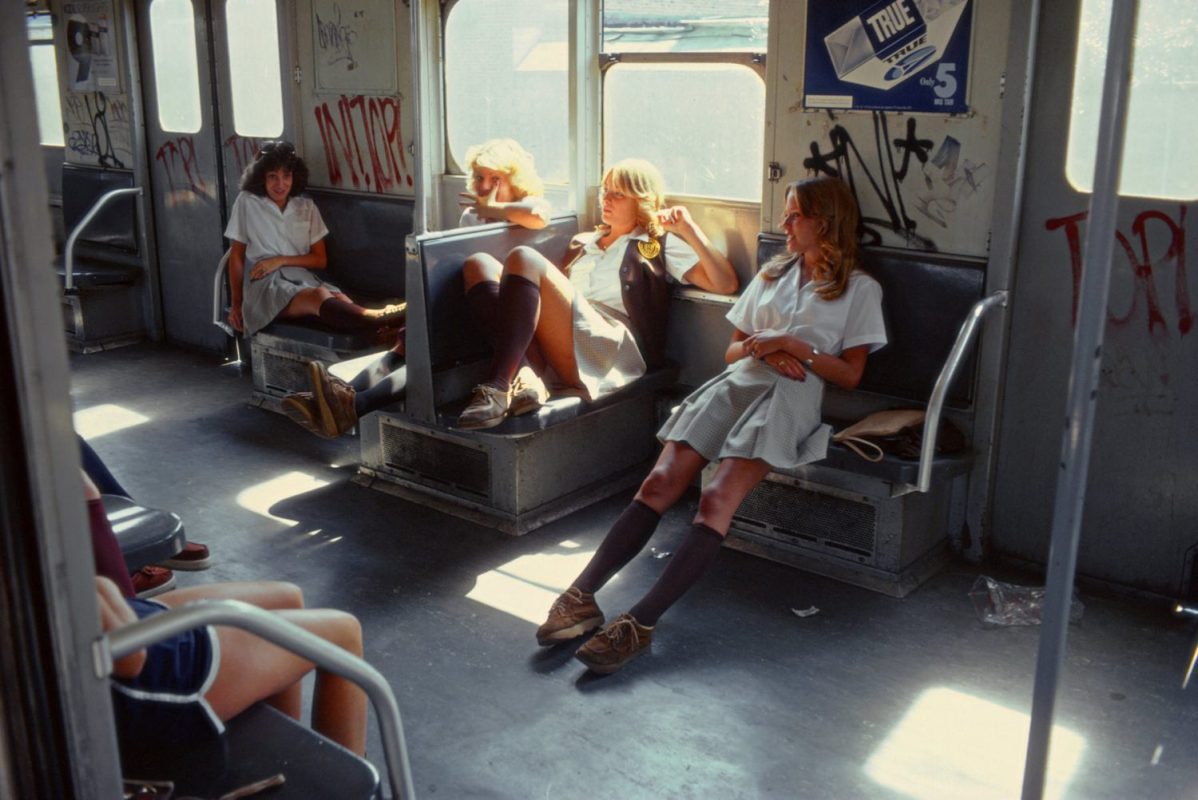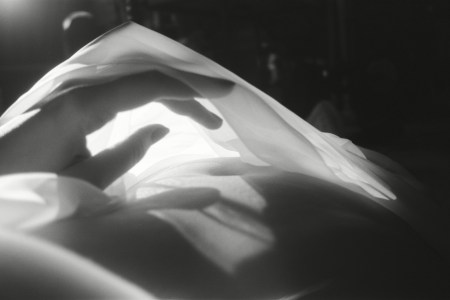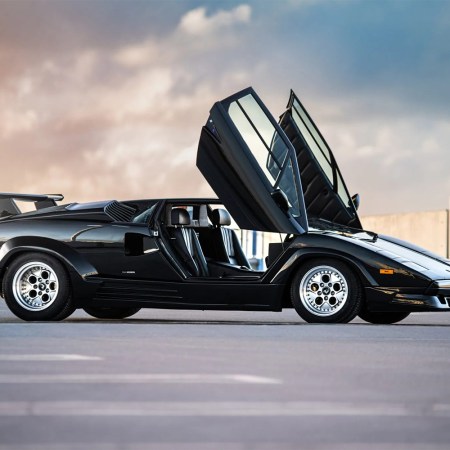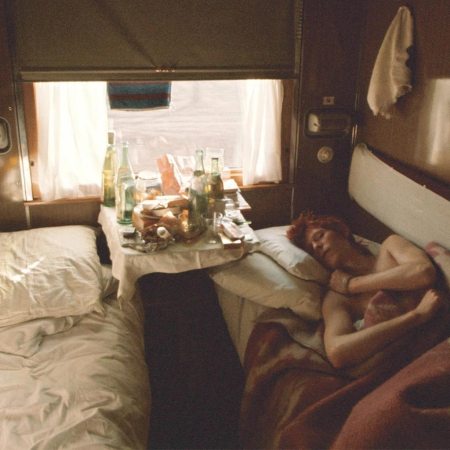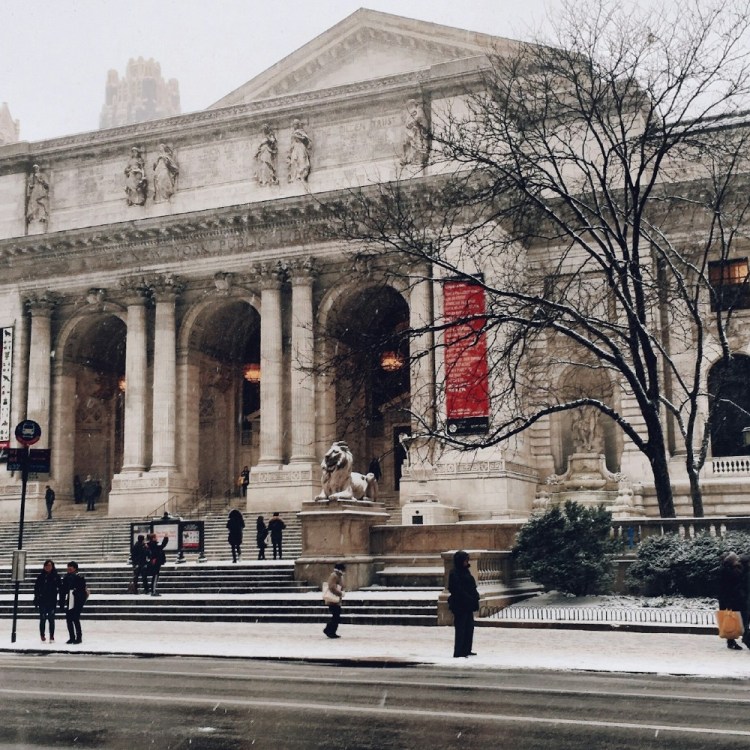When people think of New York City in the 1970s and ’80s, they think of seedy Times Square peep shows, crack vials in the street, burned out buildings and muggings in the subway. Willy Spiller thought it would be a great place to move. “Back then, the call of New York was tremendous,” says Spiller, a photographer who grew up in a part of the Swiss countryside so sparsely populated that my Google Maps refuses to find it. But by the age of 30 — after getting hooked on photography in college, working at a well-regarded Zurich newspaper, living in cities like Milan and traveling to Africa and Asia — Spiller yearned to experience the Big Apple’s world-renown arts and culture scene, particularly the music and fashion he heard so much about. In 1977, he landed in New York and, fittingly, stayed at the legendary artist outpost the Chelsea Hotel.
“From there, I took my first expeditions,” Spiller says, describing his trips around the city so dramatically because, yes, he was warned about the dangers of New York ahead of time — apocryphally so. “Somebody said, ‘Watch out. Because of the skyscrapers, it’s so dark in the street, even during the day you have to walk with a flashlight.’”
On the contrary, Spiller found the city to be advantageously bright. “In between those valleys of the avenues and streets, it’s overwhelming, the light,” he says. “So you can stand there, everywhere, and just take snapshots.” Spiller earned a living in New York shooting for stories by Foreign Press Club correspondents, leveraging credentials he’d earned while employed in Zurich, where he now lives once again. “I realized that the subway can feed me,” Spiller says. “For most of the correspondents from the rest of the world, it was so exotic, and it had such a reputation for being dangerous. It lured me immediately down there, and I could sell these [photos] very well.”
Artist Johanna Stickland on Intimacy, Photography and Inspiration
The artist’s new show, PRISM, opens on July 20During the course of the next eight years, he would capture some 2,000 images across New York City’s dizzying maze of train tracks. You might’ve taken a couple thousand pics on your iPhone at Disneyland last week, but Spiller shot on film — which was expensive but, because of the relatively exorbitant cost, it compelled him to shoot discerningly.
In 1986, a small publisher released a collection of Spiller’s photos in a softcover book with only German text and an absurdly innocuous title, Subway New York. Spiller says the effort was, in terms of sales, “a failure.” But 30 years later, another modest, independent Swiss publisher, Sturm & Drang, redesigned the book, giving it a hard cover and a far more arresting title: Hell on Wheels. This edition did better, selling out its first printing within weeks.
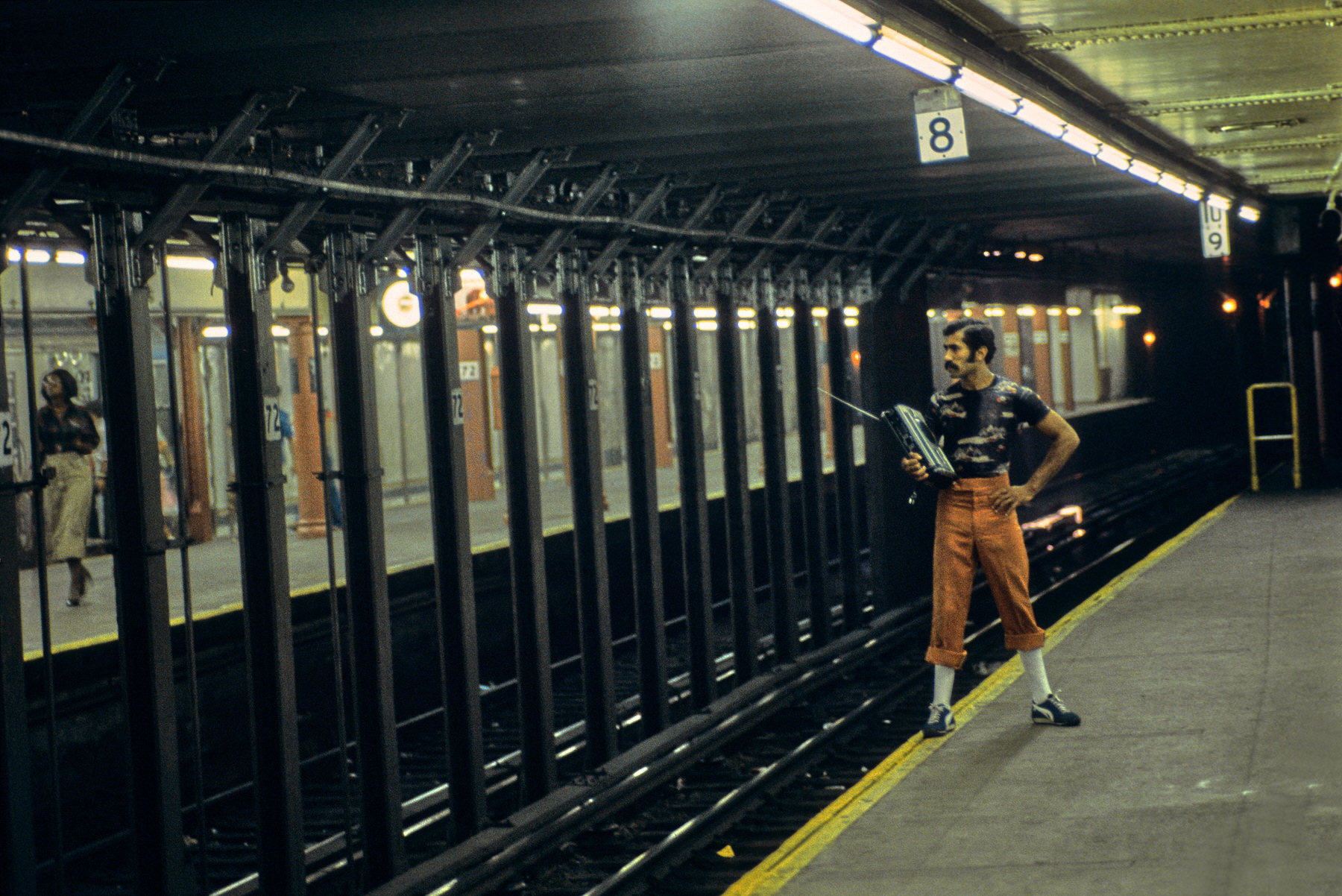
Spiller explains that when Hell on Wheels was released in 2016, “young people in Europe went crazy about the ’80s,” as the period’s fashion came back in vogue. Since then, the Sturm & Drang version of Spiller’s subway photoset has gone out of print — and become increasingly sought after. A second-hand book seller currently has it listed online for $1,920. Reportedly, copies have run as high as $2,300. (Subway New York is also on the second-hand market, and pricey in its own right.)
Now, a third edition of the Spiller subway photo collection, which has retained the Hell on Wheels title, is available from Bildhalle, a gallery for photography that boasts locations in Zurich and Amsterdam. The newest Hell on Wheels — with a limited edition of 150 copies that includes a print for 250 Swiss francs (around $288), as well as signed and unsigned copies for sale — also contains a forward by the writer, former Life magazine editor-in-chief and photography lover Bill Shapiro.
A mutual associate connected Shapiro to Spiller with hopes that Shapiro would pen the book’s forward. The request was perfectly timed. “I had recently moved to New Mexico after 35 years in Brooklyn riding the fucking F train,” Shapiro says. “It was great for me to think back on all of the good and bad of my subway years.”
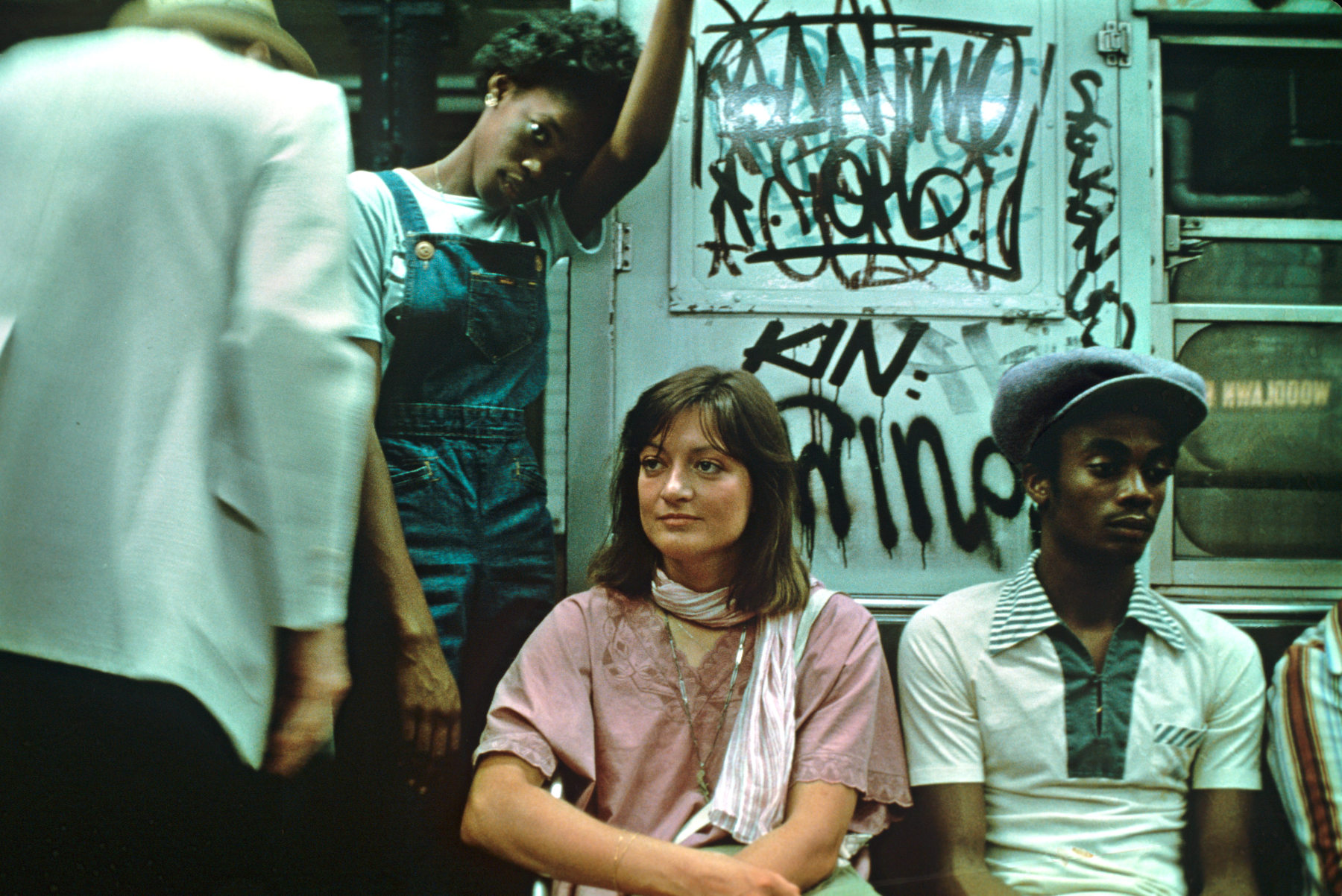
In the book’s introduction, Shapiro, who’d only been lightly familiar with Spiller’s subway photos before the writing assignment came across his desk, briefly describes being robbed once at gunpoint on a 1 train platform. It was 3:15 a.m. and Shapiro was “teeteringly drunk,” he writes. “But that’s not the memory that [Spiller’s] images stir in me,” Shapiro continues. “What comes back is the surge of confidence I felt in my first days of living in the City and riding the trains to bars, Central Park, job interviews, flush with that Mary Tyler Moore hat-in-the-air sense that I was making it on my own.”
Save for a single photo of a building with boarded-up windows and another depicting a police arrest (featuring a fuzzy officer atop a perpetrator on the ground while two other cops standing next to them tensely brandish batons as though waiting their turn), the actual content of Hell on Wheels almost goes out of its way to belie the title. Sure, the tagging on subway car walls permeates its pages; pretty much everything looks dirty, and a persistent undercurrent of tension that, to this day, flows through all that exists in New York is there as well. How could it not be? But for the most part, Spiller’s photos reveal a refreshing neutrality and even a sense of fun to life in “Fear City,” which was what the NYPD infamously dubbed the Five Boroughs in a pamphlet printed two years before the eager Swiss photographer showed up.
A woman who looks to be about 30 leans against a steel support beam reading a book, and a man in grey bellbottom slacks leans against a shoot-em-up video game. People buy candy, peanuts and popcorn at a platform store; another group of cops check out tabloid headlines at a newsstand. A young boy rides between cars, a conductor gives directions to an old woman and two ballet dancers in their late teens or early 20s wait for their train to stop. It’s people going about their day. There are a few morose mugs, to be sure, but a number of smiles, too. A couple photos detail more elaborately artful graffiti along the sides of subway cars, and the Twin Towers as seen from the Williamsburg Bridge tracks remind us of their powerful influence on the skyline.
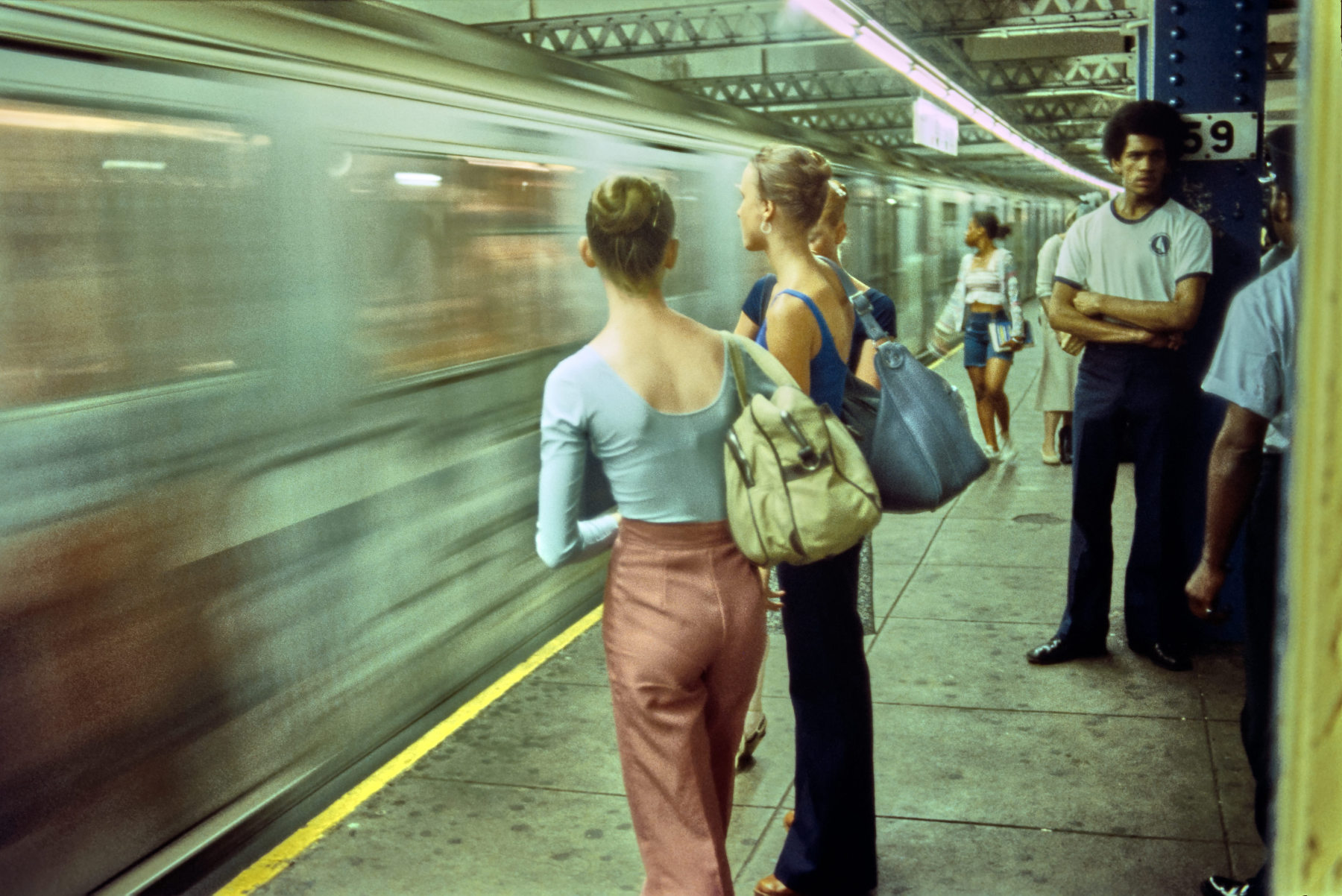
Hell on Wheels, thus, is a beautiful troll job. Its title drips with irony as palpable as the nostalgia invoked by the photos contained within. The book is less The Warriors and more the credits of Welcome Back, Kotter. “It’s not like it was a fucking fairy tale down there,” Shapiro says. “For sure it wasn’t, but I do think that it definitely was not just a total fucking hellscape.”
My mom can confirm this. Around the time Spiller’s Subway New York was published, she chaperoned a seven-year-old me and my five-year-old twin brothers on a train to see the 1986 World Series champion Mets roll through Downtown Manhattan’s Canyon of Heroes. We had a nice time — until, on the way home, some kid standing on a subway platform tried to steal my Mets hat off my head after sliding his hand through an open train car window. My mom shouted an expletive and punched the cap out of his grip before we moved onto the next station.
And yet, folks, whether they’re from the city or not, tend to romanticize the period in New York history that Hell on Wheels chronicles — usually not in the authentic, retroactive way Spiller does. As Edmund White wrote in a 2015 article for The New York Times Style Magazine titled “Why Can’t We Stop Talking About New York in the Late ’70s?,” it was an era “when the city was edgy and dangerous, when women carried Mace in their purses, when even men asked the taxi driver to wait until they’d crossed the 15 feet to the front door of their building, when a blackout plunged whole neighborhoods into frantic looting, when subway cars were covered with graffiti, when Balanchine was at the height of his powers and the New York State Theater was New York’s intellectual salon, when John Lennon was murdered by a Salinger-reading born-again.” That’s the draw?
Yes and no.
White went on to observe that the more unsettled version of the city from 40 or 50 years ago “was also more democratic: a place and a time in which, rich or poor, you were stuck together in the misery (and the freedom) of the place, where not even money could insulate you.” Today’s New York is, of course, safer, and “more burnished and efficient,” White wrote, but also “cornerless and predictable” — the type of city that, as filmmaker John Waters noted to White, nobody would want to write a book about.
Hell on Wheels shows people of all colors, shapes, sizes and savings accounts on the subway, as seen through the eye of an adventurous outsider, bouncing off each other, while (mostly) sparing us the muggings. I don’t see my review copy leaving the top of my coffee table anytime soon.
This article was featured in the InsideHook NY newsletter. Sign up now for more from all five boroughs.
